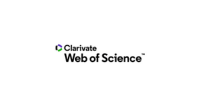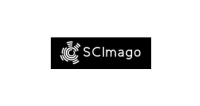IDENTIFICATION OF HOLSTEIN COWS CARRIERS OF COMPLEX VERTEBRAL MALFORMATION BY HIGH RESOLUTION MELTING CURVES (HRM)
DOI:
https://doi.org/10.5380/avs.v24i4.65494Palavras-chave:
Holstein, CVM, high-resolution dissociation curve.Resumo
The objective of this study was the optimization and implementation of a reliable and economical molecular screening method for the detection of the mutant allele of CVM (complex vertebral malformation, c.559G>T, SLC35A3) by HRM analysis, as well as analyzing its existence in a representative sample of Holstein cows from the Milk Genomic DNA Bank of Uruguay. The optimization of the HRM methodology in the RotorGene™ 6000 equipment (Corbett Life Science, Australia) by amplification of the 79 bp PCR products clearly differentiated the two genotypes: homozygous, wild type: GG; and heterozygous, carrier for the mutation CVM: GT (c.559G>T; SLC35A3). In the analyzed sample, the frequency of the mutant allele (T) for CVM was high (q = 0.032), with a prevalence of carrier cows of 6.45%. It is concluded that the PCR-HRM analysis is a fast, easily interpretable, low cost, and highly accurate technique for the detection of this mutation in Holstein cattle, which may be implemented in genetic selection programs.
Downloads
Publicado
Como Citar
Edição
Seção
Licença
Autores que publicam nesta revista concordam com os seguintes termos:
- Autores mantém os direitos autorais e concedem à revista o direito de primeira publicação, com o trabalho simultaneamente licenciado sob a Creative Commons - Atribuição 4.0 Internacional que permite o compartilhamento do trabalho com reconhecimento da autoria e publicação inicial nesta revista.
- Autores têm autorização para assumir contratos adicionais separadamente, para distribuição não-exclusiva da versão do trabalho publicada nesta revista (ex.: publicar em repositório institucional ou como capítulo de livro), com reconhecimento de autoria e publicação inicial nesta revista.
- Autores têm permissão e são estimulados a publicar e distribuir seu trabalho online (ex.: em repositórios institucionais ou na sua página pessoal) a qualquer ponto antes ou durante o processo editorial, já que isso pode gerar alterações produtivas, bem como aumentar o impacto e a citação do trabalho publicado.













